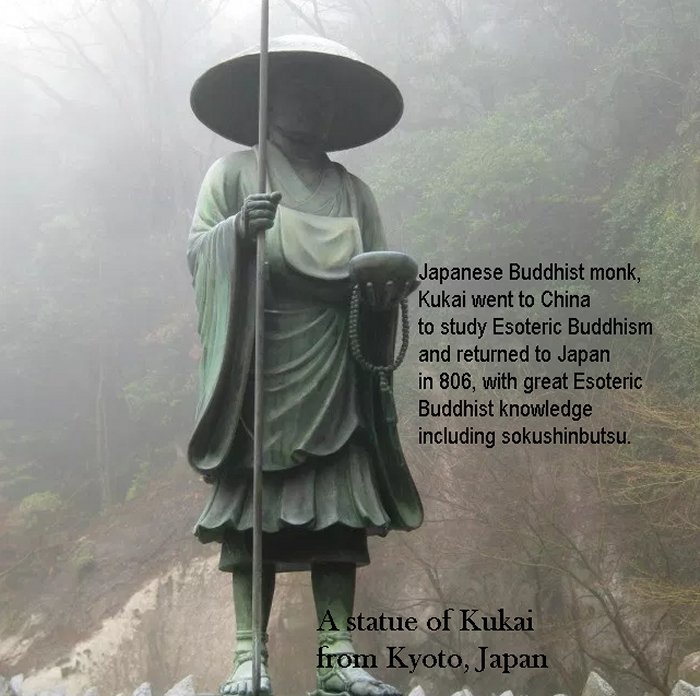What Was The Extreme Ritual Of Sokushinbutsu?
A. Sutherland - AncientPages.com - The Sokushinbutsu Buddhist monks of northern Japan were those who were able to mummify their bodies while alive.
These monks practiced an extreme, physical act of self-deprivation. They spent years slowly preparing their bodies by starving themselves to death, according to a carefully prescribed method.
The procedure could gradually change their bodies to the physical state necessary for mummification.
The purpose of successful act of self-deprivation was to disregard their physical self.
Those who were successful at mummifying themselves were considered by their followers to be a Buddha. Their preserved bodies would be displayed in temples; a symbol of the possibility of attaining the status of Buddha.
There are only between 16 and 28 known successful cases of self-mummification (Sokushinbutsu), however, only 16 of them can be visited.
The Sokushinbutsu monks were first of all, elderly Buddhist monks of the Shingon (or the so-called “True World”) sect founded by the great Kukai (774–835). He was sent to China by the Japanese emperor at the beginning of the 9th century. There, he became a disciple of Huikuo, a great Buddhist teacher.
Later, he returned to Japan and brought with him many esoteric practices. One of them, was a secret tantric ritual 'sokushinjobutsu' (“attaining Buddhahood in the flesh”). It was an extreme ascetic and suicidal practice of self-mummification.
Kukai founded a monastery on Mount Koya, beginning the Shingon school of Buddhism. Shingon foundation was based on the belief in the three mysteries of Buddhism - body, speech, and mind. It was thought that one could attain Buddhahood through mastering any one of them.
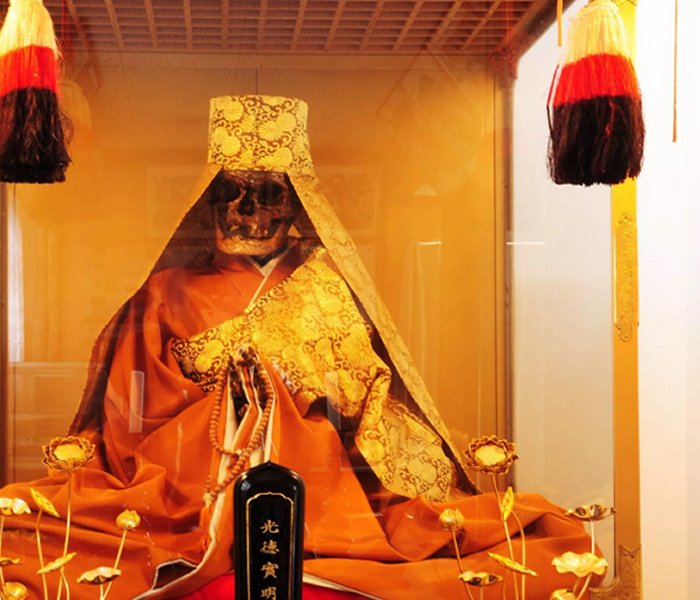
The Sokushinbutsu monks were first of all, elderly Buddhist monks of the Shingon (the so-called “True World”) sect founded by the great Kukai.
The Sokushinbutsu monks believed that physically destructive acts lead to the path of enlightenment. It is said that Kukai himself is still sitting in the lotus position inside the stone of Mount Koya, although the public are not allowed to see him.
After he died, Kukai was known as Kobo Daishi ("The Grand Master Who Propagated the Buddhist Teaching").
Long-term starvation
During the first stage of the Sokushinbutsu process, lasting 1000 days (almost 3 years) the monk had to follow very rigorous physical exercise every day. His only food was nuts and seeds. Now, his body fat was almost completely eliminated and he could begin the next step in the Sokushinbutsu ritual.
For the next one thousand days, he would move on to an even sparser diet of bark and roots from pine trees called mokujiki. Towards the end of this time, the Sokushinbutsu monk would begin to drink poisonous tea from the sap of the Urushi tree.
Another name for this tree is the Japanese Varnish tree. Its sap is cultivated as a lacquer used to lacquer bowls. This diet would dehydrate the monk, and this process would slow down his body’s decomposition once he was dead.
The Urushi tree tea would make him vomit, sweat and urinate frequently leeching almost all moisture from his body. This tea was also so extremely toxic that it would prevent maggots from feasting on the corpse.
At the end of this second period of one thousand days, the monk would lock himself in a stone tomb, with limited space for him to sit in the lotus position. He would neither eat nor drink, but only sit in stillness, breathing from an air tube inserted in the tomb and ringing a bell each day to let those outside know he was still alive.
The day that the bell remained silent, it was understood that the Sokushinbutsu monk died.
The other monks would then remove the air tube and his tomb was sealed for another thousand days. Then, according to tradition, the tomb was opened to control if the body was preserved. If he was not preserved, the tomb would be re-sealed, and the monk would remain in his stone tomb forever. If the body was successfully preserved, the monk was a Buddha, and would be removed for the disciples to worship. The most famous is Shinnyokai Shonin of the Dainichi-Boo Temple on the holy Mount Yudono who successfully mummified himself.
It has been suggested that a local spring in the vicinity of the temple had high levels of arsenic, and this may have helped the monks in the mummification process.
In the late 19th century, the Japanese government banned the ritual, which continued to the 20th century.
Written by – A. Sutherland AncientPages.com Staff Writer
Copyright © AncientPages.com All rights reserved. This material may not be published, broadcast, rewritten or redistributed in whole or part without the express written permission of AncientPages.com
Expand for referencesReferences:
Jeremiah, K. (2010). Living Buddhas: The Self-Mummified Monks of Yamagata, Japan.
Hori, I. (1962). Self-Mummified Buddhas in Japan.
Jeremiah K. Sokushinbutsu (Self-Mummified Monks) and the Samurai
More From Ancient Pages
-
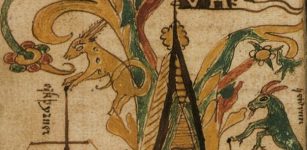 Eikthyrnir – Mythical Male Deer And Heidrun She-Goat Stand On The Top Of Valhalla
Featured Stories | Feb 11, 2019
Eikthyrnir – Mythical Male Deer And Heidrun She-Goat Stand On The Top Of Valhalla
Featured Stories | Feb 11, 2019 -
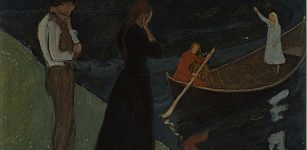 Tuonela – The Land Of The Dead In Beliefs Of Ancient Finnish People
Featured Stories | Nov 9, 2021
Tuonela – The Land Of The Dead In Beliefs Of Ancient Finnish People
Featured Stories | Nov 9, 2021 -
 Rare 2,700-Year-Old Seal Of Biblical King Jeroboam II’s Servant Confirmed Authentic
Artifacts | Jan 18, 2021
Rare 2,700-Year-Old Seal Of Biblical King Jeroboam II’s Servant Confirmed Authentic
Artifacts | Jan 18, 2021 -
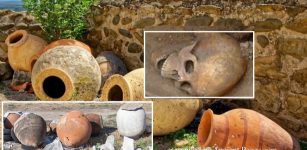 Researchers Develop New Ways Of Visualizing Ancient Small Objects By Combining Technologies
Archaeology | Apr 20, 2022
Researchers Develop New Ways Of Visualizing Ancient Small Objects By Combining Technologies
Archaeology | Apr 20, 2022 -
 Incredible 5,000-Year-Old Temple Complex In Orkney Could Re-Write History Of Scotland
Civilizations | Jul 30, 2014
Incredible 5,000-Year-Old Temple Complex In Orkney Could Re-Write History Of Scotland
Civilizations | Jul 30, 2014 -
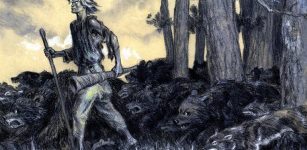 Ilmarinen – Divine Blacksmith And Trusted Friend Of Wizard Vainamoinen In Kalevala
Featured Stories | Nov 16, 2018
Ilmarinen – Divine Blacksmith And Trusted Friend Of Wizard Vainamoinen In Kalevala
Featured Stories | Nov 16, 2018 -
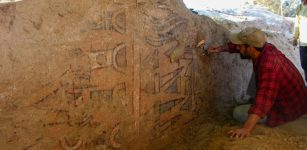 Exceptional Discovery Of Ancient Fresco Depicting Mythological Scenes In Peru
Archaeology | Dec 1, 2022
Exceptional Discovery Of Ancient Fresco Depicting Mythological Scenes In Peru
Archaeology | Dec 1, 2022 -
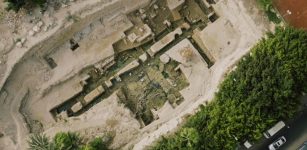 New Hope To Finally Find Tomb Of Alexander The Great
Archaeology | Mar 6, 2019
New Hope To Finally Find Tomb Of Alexander The Great
Archaeology | Mar 6, 2019 -
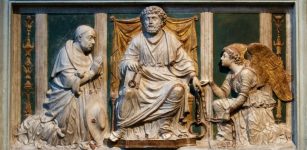 Nicholas Of Cusa – A Medieval Scholar And Mystic With Highly Unorthodox Ideas
Featured Stories | Aug 13, 2021
Nicholas Of Cusa – A Medieval Scholar And Mystic With Highly Unorthodox Ideas
Featured Stories | Aug 13, 2021 -
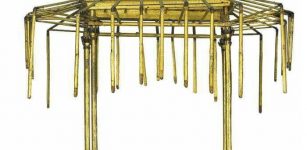 Was Tutankhamun’s Chariot Equipped With Its Own Sunshade?
Archaeology | Jun 27, 2019
Was Tutankhamun’s Chariot Equipped With Its Own Sunshade?
Archaeology | Jun 27, 2019 -
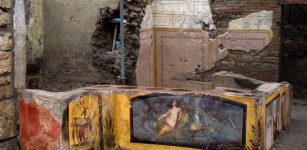 Remarkably Well-Preserved Thermopolium With Frescoes, Food, And Jars Discovered In Pompeii
Archaeology | Dec 28, 2020
Remarkably Well-Preserved Thermopolium With Frescoes, Food, And Jars Discovered In Pompeii
Archaeology | Dec 28, 2020 -
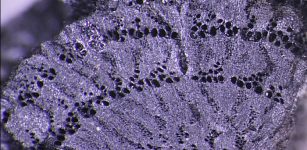 Ancient Tell-Tayinat Inhabitants And Climate Change Resilience – New Study
Archaeology | Oct 30, 2020
Ancient Tell-Tayinat Inhabitants And Climate Change Resilience – New Study
Archaeology | Oct 30, 2020 -
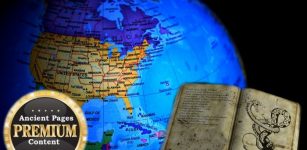 Long-Forgotten Ancient Book Contains Extensive Scientific Survey Of North America Made 4,500 Years Ago
Featured Stories | Jul 26, 2019
Long-Forgotten Ancient Book Contains Extensive Scientific Survey Of North America Made 4,500 Years Ago
Featured Stories | Jul 26, 2019 -
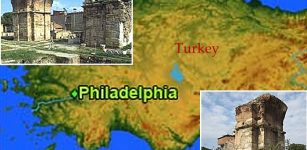 Ancient Health Center Discovered In Philadelphia, Central Anatolia, Turkey
Archaeology | Apr 22, 2016
Ancient Health Center Discovered In Philadelphia, Central Anatolia, Turkey
Archaeology | Apr 22, 2016 -
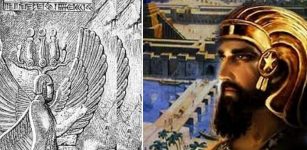 Cyrus The Great: Founder Of Achaemenid Empire Who Conquered Medians, Lydians And Babylonians
Featured Stories | Mar 21, 2019
Cyrus The Great: Founder Of Achaemenid Empire Who Conquered Medians, Lydians And Babylonians
Featured Stories | Mar 21, 2019 -
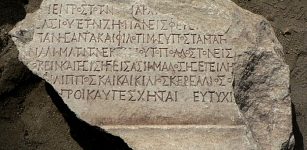 2nd Century Inscription Unearthed At Forum Of Ancient City Of Philippopolis, Bulgaria
Archaeology | Oct 21, 2019
2nd Century Inscription Unearthed At Forum Of Ancient City Of Philippopolis, Bulgaria
Archaeology | Oct 21, 2019 -
 First European Farmers’ Heights Did Not Meet Expectations
Archaeology | Apr 8, 2022
First European Farmers’ Heights Did Not Meet Expectations
Archaeology | Apr 8, 2022 -
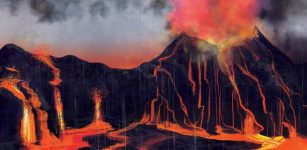 Evidence Of Dual Mass Extinctions 260 Million Years Ago – Found
Fossils | Apr 10, 2023
Evidence Of Dual Mass Extinctions 260 Million Years Ago – Found
Fossils | Apr 10, 2023 -
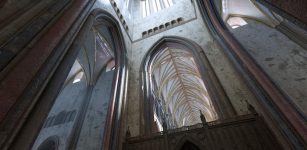 A Glimpse Into The Past – Sights And Sounds Of St. Paul’s Cathedral Recreated
Archaeology | Oct 8, 2021
A Glimpse Into The Past – Sights And Sounds Of St. Paul’s Cathedral Recreated
Archaeology | Oct 8, 2021 -
 Neanderthals Invented Or Developed Birch Tar Making Technique Independently From Homo sapiens
Archaeology | May 30, 2023
Neanderthals Invented Or Developed Birch Tar Making Technique Independently From Homo sapiens
Archaeology | May 30, 2023


